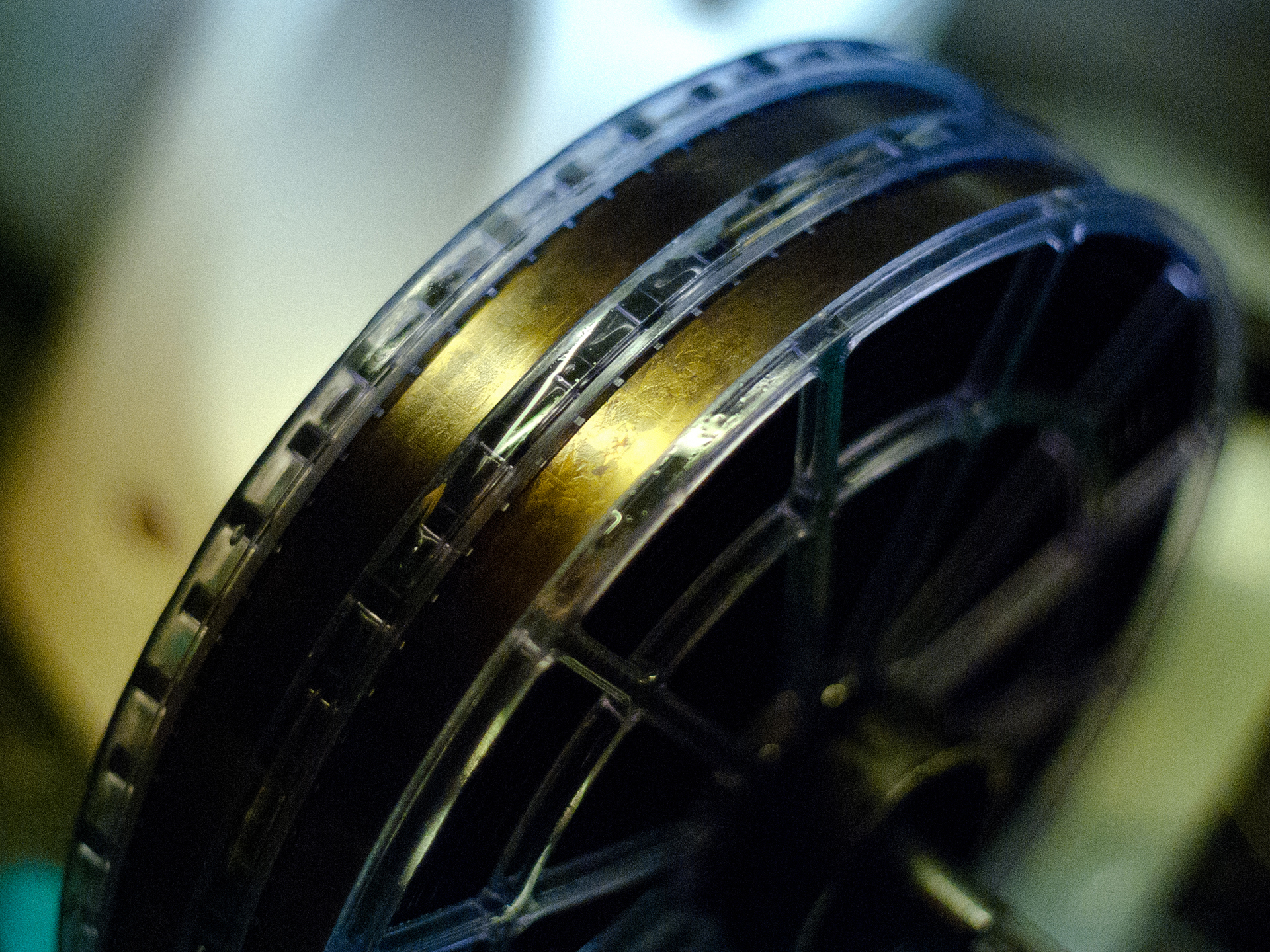
Abstract
In this multi-day workshop, we will be exploring the anatomy of a film strip through a variety of physical and chemical phenomenons that will reshape, destroy and sculpt the film emulsion. Afterwards, we will study and develop creative methods of lighting and re-photograph the film emulsion via the optical printer…
Below: Documentation from “Guilty”, a workshop in association with no.w.here
Attending the Workshop
This workshop will be occurring across three dates (March 12th, March 14th & March 19th, 2013) and between the hours of 1:30 PM & 3:00 PM (Mountain Time).
Due to the generous contributions of Sarah Biagini and Kevin Rice, this workshop will be free and open to the public, including the use of chemistry, film stock and film equipment. However, both space and resources are limited and therefore we can not guarantee that we will be able to facilitate all prospective participants. Therefore, it is in your best interest to contact us and reserve a space ahead of time.
There are no additional requirements for workshop attendance.
Frequently Asked Questions
Q: I’ve never worked with motion picture film before. Will that limit my experience?
A: No, experience with motion picture film is not necessary when participating in the workshop and we will try and accommodate as many questions you have possible before, during or after the workshop.
Q: I have some film I would like to bring into the workshop to work with. Is this okay?
A: Yes, but there are a few things you should keep in mind when bringing in film for this workshop. First off, because we will be limited on time, your film should already be processed. This will not affect your ability to work with any of the techniques presented in the workshop per say. Second, it is recommended that you avoid bringing in a film of particular value or significance as we cannot guarantee that it will not be damaged or ruined beyond a usable extent. This is, after all, a workshop on essentially destroying film — so the choice is entirely yours.
If you do decide to bring film, there are a few things you should keep in mind: first, while it is possible to exercise some of the techniques reviewed in this workshop on all varieties of film, the majority of the techniques work best specifically with an image formed of silver. What this means is that black and white film (which is typically formed solely of silver) will be the most versatile stock to bring, where as color stocks will be more limited (as they typically have the silver removed in processing). The only exception to this is in regards to color film that has been bleach-bypassed, a specific lab technique which retains the silver in the dense regions of the color emulsion; if the utilization of color film in this workshop is of particular interest to you, than email us to discuss the topic further — additionally, we will be discussing it in the workshop itself.
As for film guage (i.e. super-8mm, 16mm, 35mm, 70mm, etc), we will have equipment to deal with all shapes and sizes of celluloid, so this should not be of a concern…
Q: I would like to travel to attend the workshop, but I’m not certain if I can afford housing accommodations. Do you provide scholarship?
A: No, but we do have a pool of volunteers that are willing to help people with free accommodations; however, it’s advised that you contact us at least two weeks before the workshop in order to secure permissions.
Q: I missed the opportunity to attend this workshop. Will you be running it again?
A: If the demand exist, absolutely. Send us an email or message requesting it.
Additional Resources
- The Master Photographers Toning Book (Tim Rudman)
- Developing (C.I. Jacobson)
- Jean-Pierre Sudre (Various Authors)
- Guilty (Georges Bataille)
- Mordancage Alternative Printing Process (Elizabeth Opalenik)
- Recipes for Disaster: A Handcrafted Film Cookbook (ed. Helen Hill)
- Unblinking Eye: Mordancage



Leave a Reply
Want to join the discussion?Feel free to contribute!